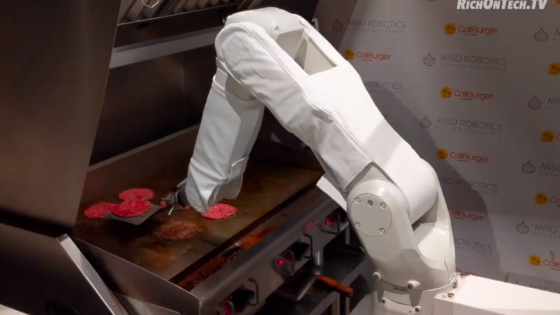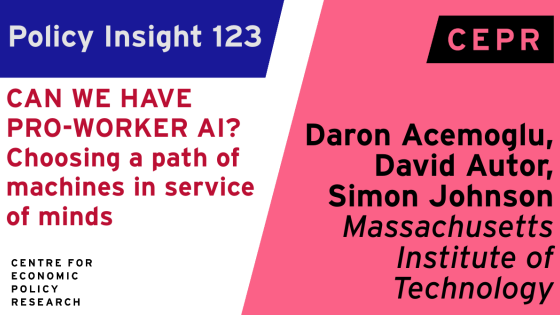The debate around job substitution by artificial intelligence (AI) and robots continues to be a contentious one. The New Industrial Structure Vision, mapped out by Japan’s Ministry of Economy, Trade and Industry (METI), forecasts a dramatic change in the economy’s employment structure caused by technological advances, and sets forth the future direction of Japan for economic growth strategies with new technology (METI 2017). What is important is that technological innovations being spurred by AI and robotics bring significant benefits, rather than negative effects, to our everyday life. But we cannot fully enjoy the benefits of technological innovations if we continue to sit on our hands. Individuals, companies, and the government must take action and execute strategies and policies with a forward-looking perspective.
Job substitution due to technological innovations and a society beyond it
Technological innovations related to AI and robotics are already starting to substitute some human jobs, and this is likely to continue in the future. ‘Substitution’ in this context does not merely mean that existing workers are substituted by AI and robots. It also means that AI and robots will perform jobs that would have been assigned to human workers if the technological innovations related to AI and robots had not occurred.
The talk of such job substitution may cause many people to fear that there will be no jobs left for human workers. However, it is worth bearing in mind that it is an extreme case in which job substitution would entirely deprive human workers of jobs. A high-impact incident tends to become dominant in people's minds even if the probability is extremely low.
Why is it necessary to create technological innovations that intend to save human labour in the first place? Answering this fundamental question, Yoshikawa (2016: 87) suggests that machines have been introduced to carry out certain jobs as a labour-saving measure. This is the result of labour shortage-induced wage rises caused by strong demand for workers in the economy as a whole.
In recent years, the desire to secure worker safety has likely also been a factor. Mechanisation is considered to improve the working environment in places requiring long working hours, caused by labour shortages, or involving risks to human lives. The original objective of technological innovation is not to deprive human workers of their jobs but to make people's lives better by improving our working environments and supporting some tasks in our occupations.
We must recognise that job substitution is just one of the phases of technological innovation. Of course, technological innovation could replace labour to an excessive degree as an unintended consequence, but a more fundamental question that we must consider is what may await us after such job substitution.
Looking forward over the next 10 to 20 years, only some tasks in our occupations will be substituted by AI, robots, and other innovations. In a society where such job substitution has made progress, AI and robots will handle tasks that humans do not necessarily engage in, so that they can concentrate on areas where we can best exercise our capabilities.
In the future, we will be able to concentrate on tasks that only humans can do, while receiving support from AI and robots. In some occupations, all tasks might be substituted by such innovations. However, note again that this will be a rare case in the next 10 and 20 years. This likely scenario will occur only to liberate human workers from long working hours by addressing labour shortages, or to ensure worker safety in dangerous workplaces.
We should consider how our tasks can be best exercised in combination with human capabilities and technological innovations. To make successful use of AI and robots, it is necessary to acquire additional new skills. Therefore, individuals with high aspirations may invest in themselves to gain advanced knowledge, and the government should also offer policies that encourage individuals to do that. In particular, my recent study emphasises the importance of the role of the government for improving worker outcomes (Hamaguchi and Kondo 2018). Supporting additional human capital investment alone is not enough to alleviate the risks posed by new technology, and policymakers need to address the gender gap issue in the labour market (e.g. gender biases for career progression and participation in decision-making positions), which will expose female workers to a higher risk of being substituted by automation than male workers. Furthermore, in order to perform economic activity more effectively, companies also must consider how to augment human tasks making use of AI and robots.
Employment and education policies in the era of AI and robotics
When considering future employment and education policies, we must bear in mind the growing importance of doing our jobs while making use of AI and robots. Rather than worrying about the risk of losing jobs to AI and robots, we must consider how the competition between those companies and people that can make effective use of AI and robots and those who cannot results in inequality. This is the issue to be tackled by the government.
An increase in the number of people capable of making effective use of technological innovations such as AI and robots will benefit the entire society by realising higher productivity. Acquisition of new skills is expected not only to improve the productivity of each individual, but also to raise the overall productivity of society through their interactions. When such network externality is largely expected, the government's policy intervention is desirable.
It is necessary to discuss not only what should be learned by people who are already in the labour market, but also what should be taught to children who are the future workers. The fundamental policy challenge is that even though the importance of the problem may be well understood, it is unclear specifically what solution should be applied and in which way.
For example, in response to calls for an emphasis on recurrent education, researchers tend to recommend the promotion of graduate school education. Of course, acquiring a graduate school degree is important, but it is not the only means of gaining further education. It is also possible to acquire new knowledge in flexible ways, beyond conventional styles, based on academic degrees or vocational qualifications. Therefore, the government should take into consideration policy measures that can support many other possibilities. In addition, the Japanese government has decided to introduce programming education (that is, logical thinking in programming, not programme coding) in elementary schools from 2020. Although it is important to make it mandatory for children, there is still ample room for discussion as to what else should be taught in which way.
In the process of policymaking, cooperation among experts in various fields is essential. In addition, it is also important to design institutional systems that make it possible to conduct ex-ante examination of evidence for policymaking and ex-post evaluation of policies. Future policy discussions must be held from the perspective of the prioritising the quality of employment and education policies in the era of AI and robots.
Editors’ note: This column was reproduced with permission from the Research Institute of Economy, Trade and Industry (RIETI), Japan.
References
Hamaguchi, N, and K Kondo (2018), “Regional Employment and Artificial Intelligence in Japan”, forthcoming in RIETI DP series.
Ministry of Economy, Trade, and Industry (2017) “New Industrial Structure Vision”, (only in Japanese, accessed on 18 December).
Yoshikawa, H (2016), Jinko to Nihon Keizai [Demography and the Japanese Economy], Tokyo: Chuokoron-Shinsha, Chuko Shinsho no. 2388, (only in Japanese).



